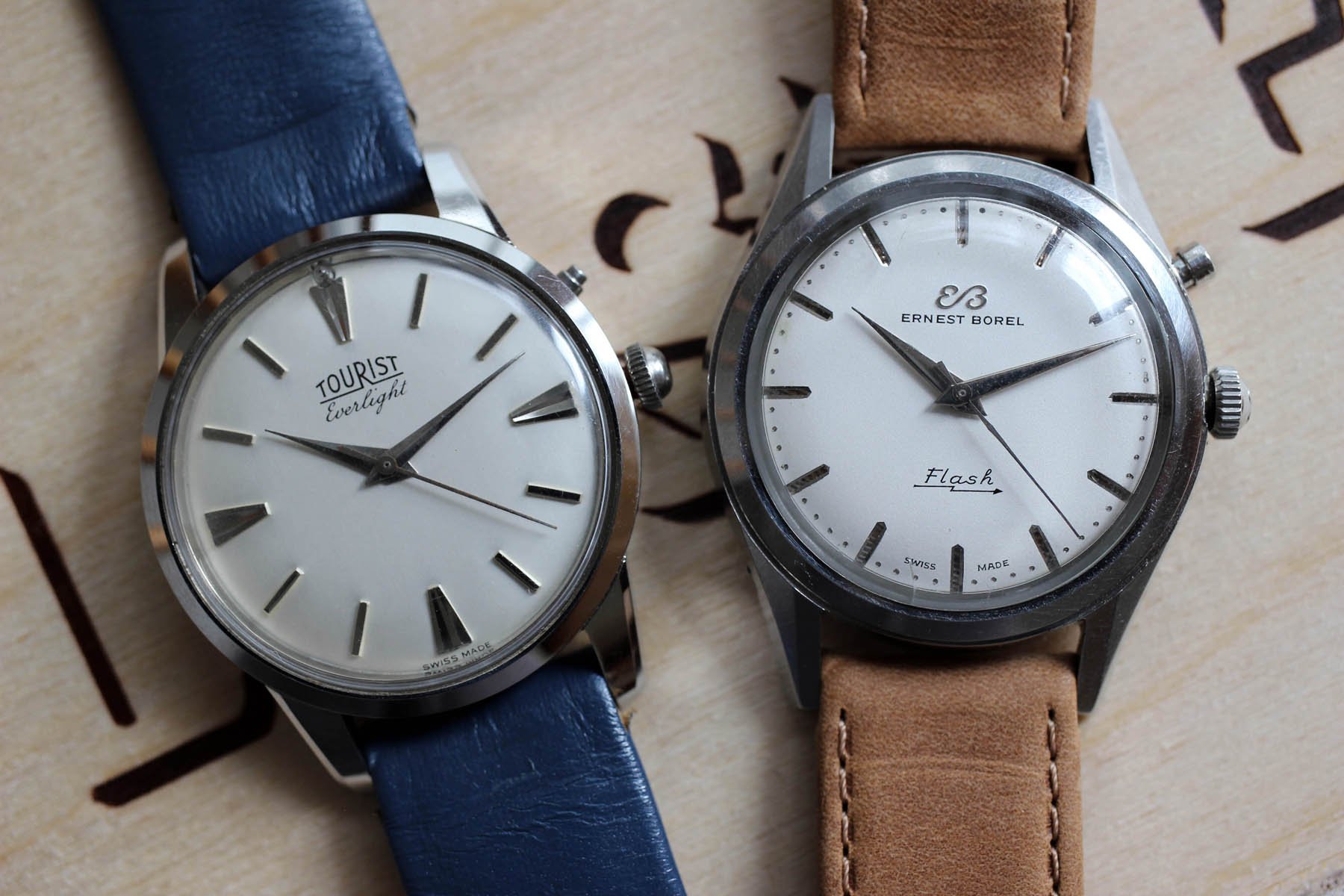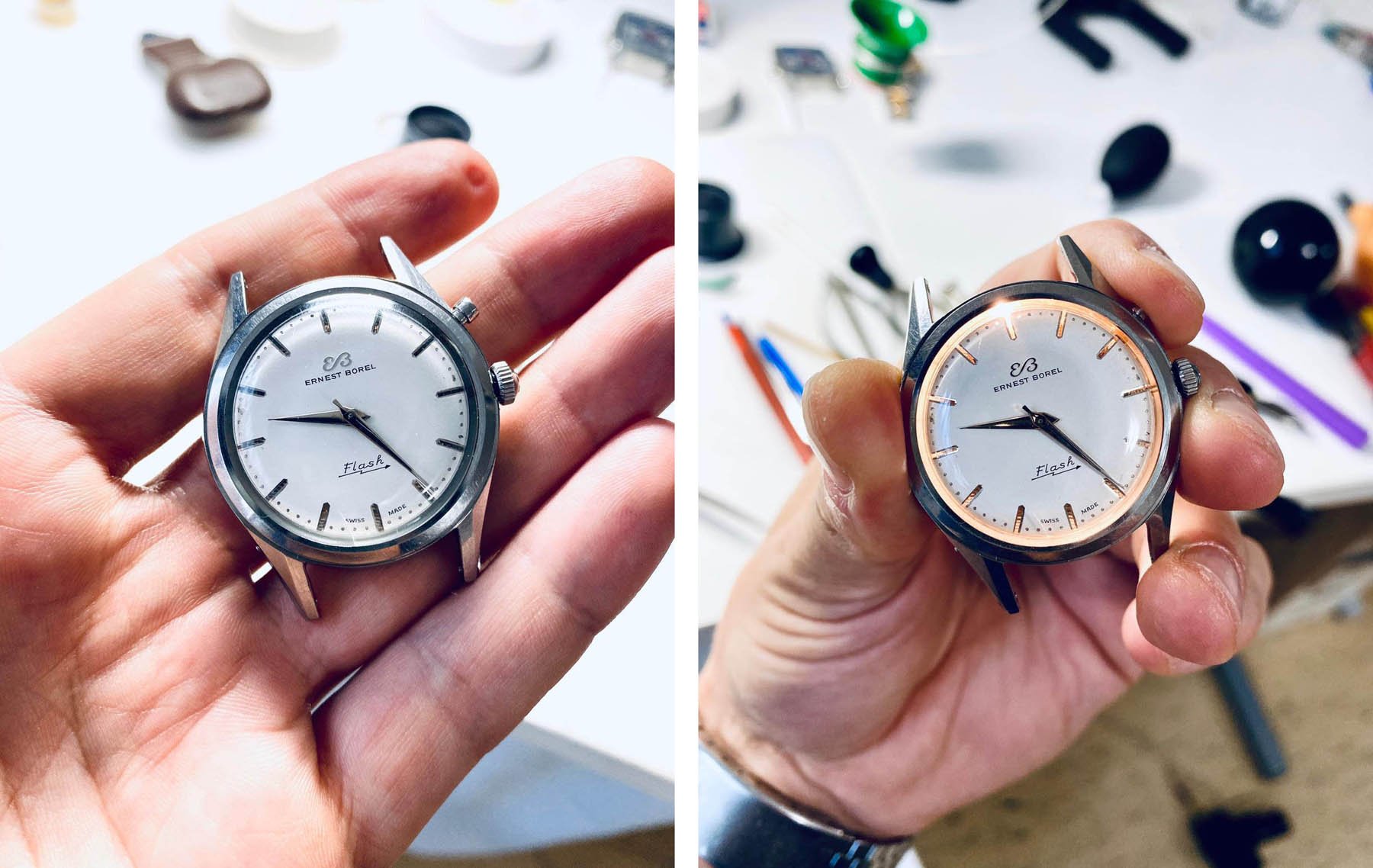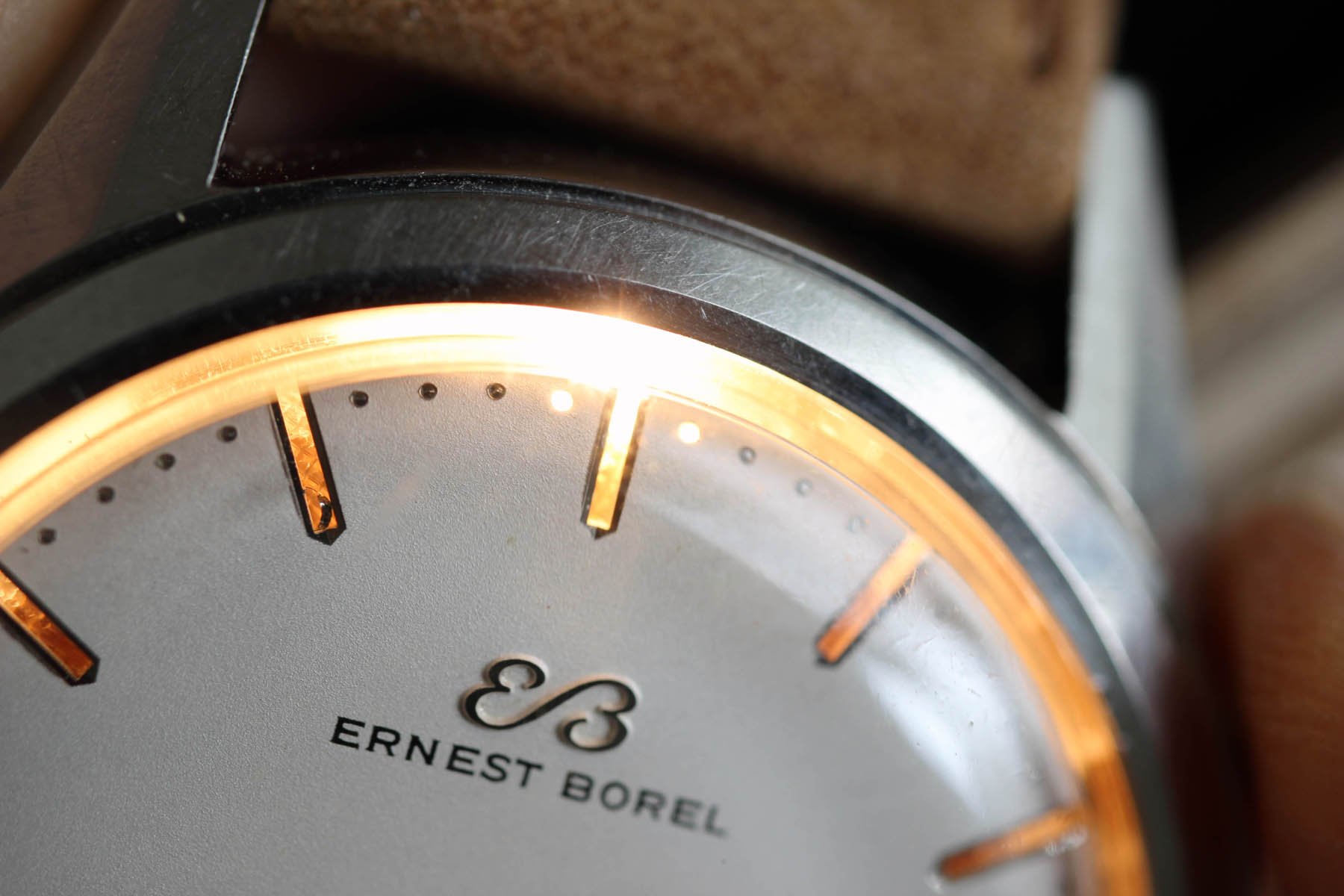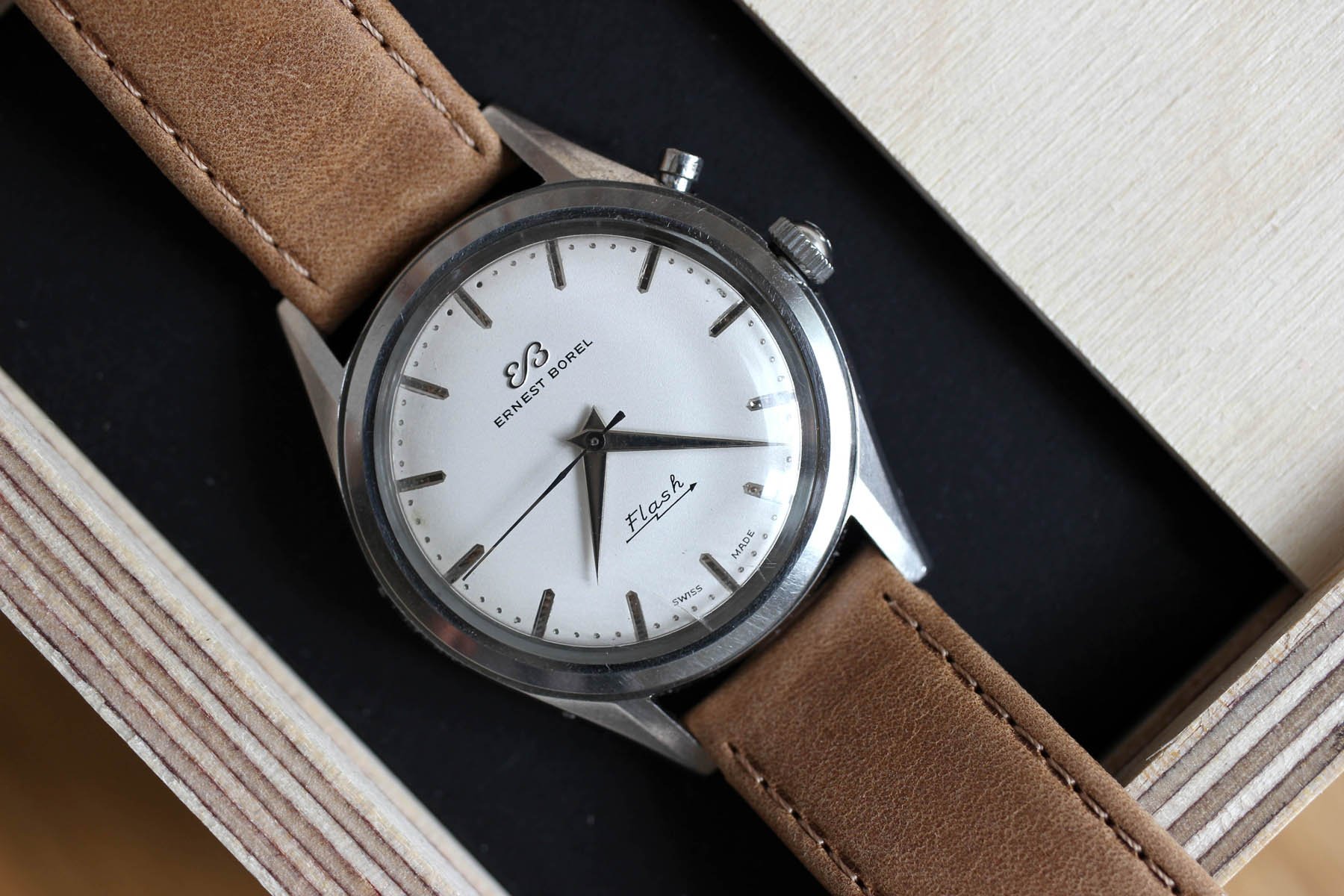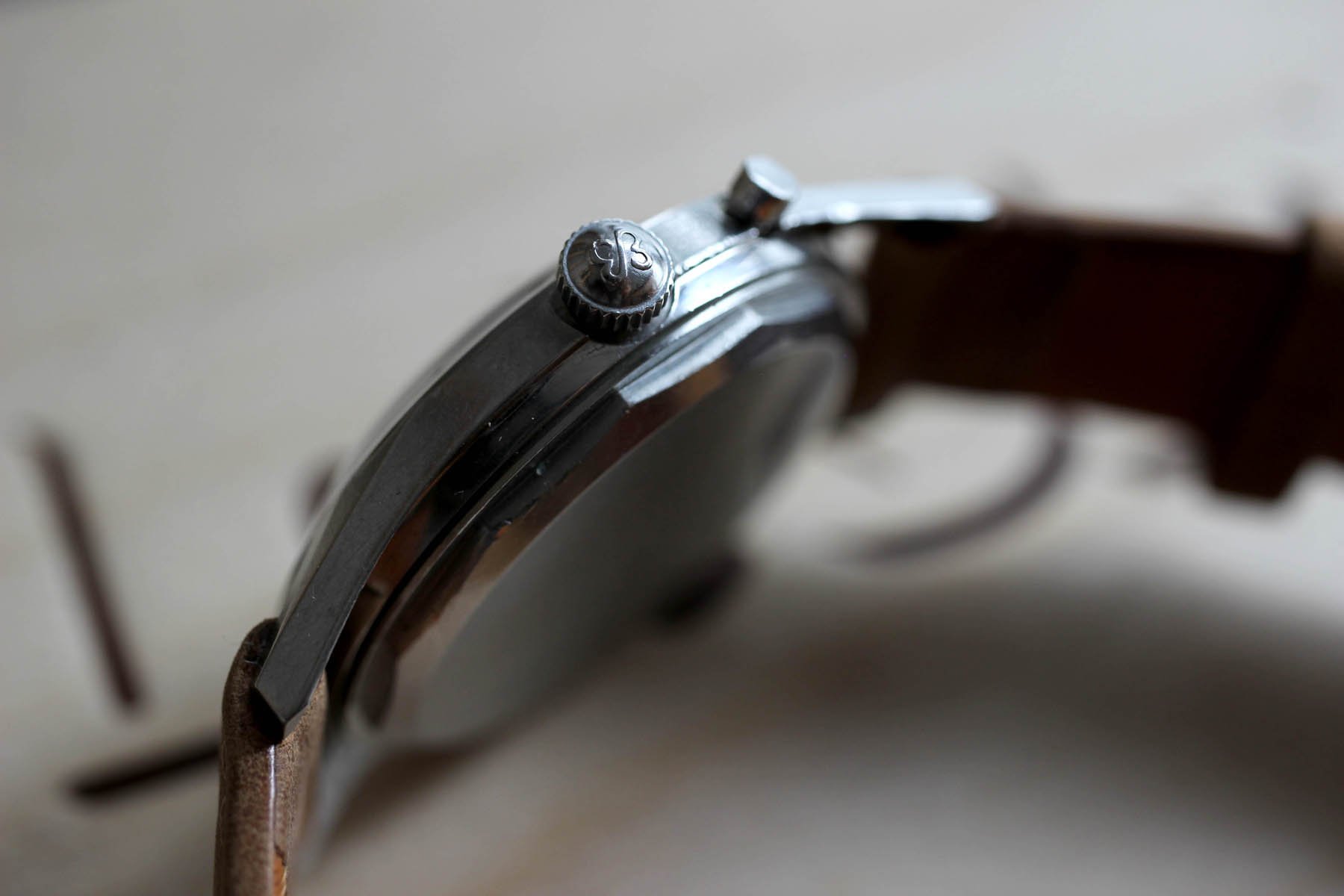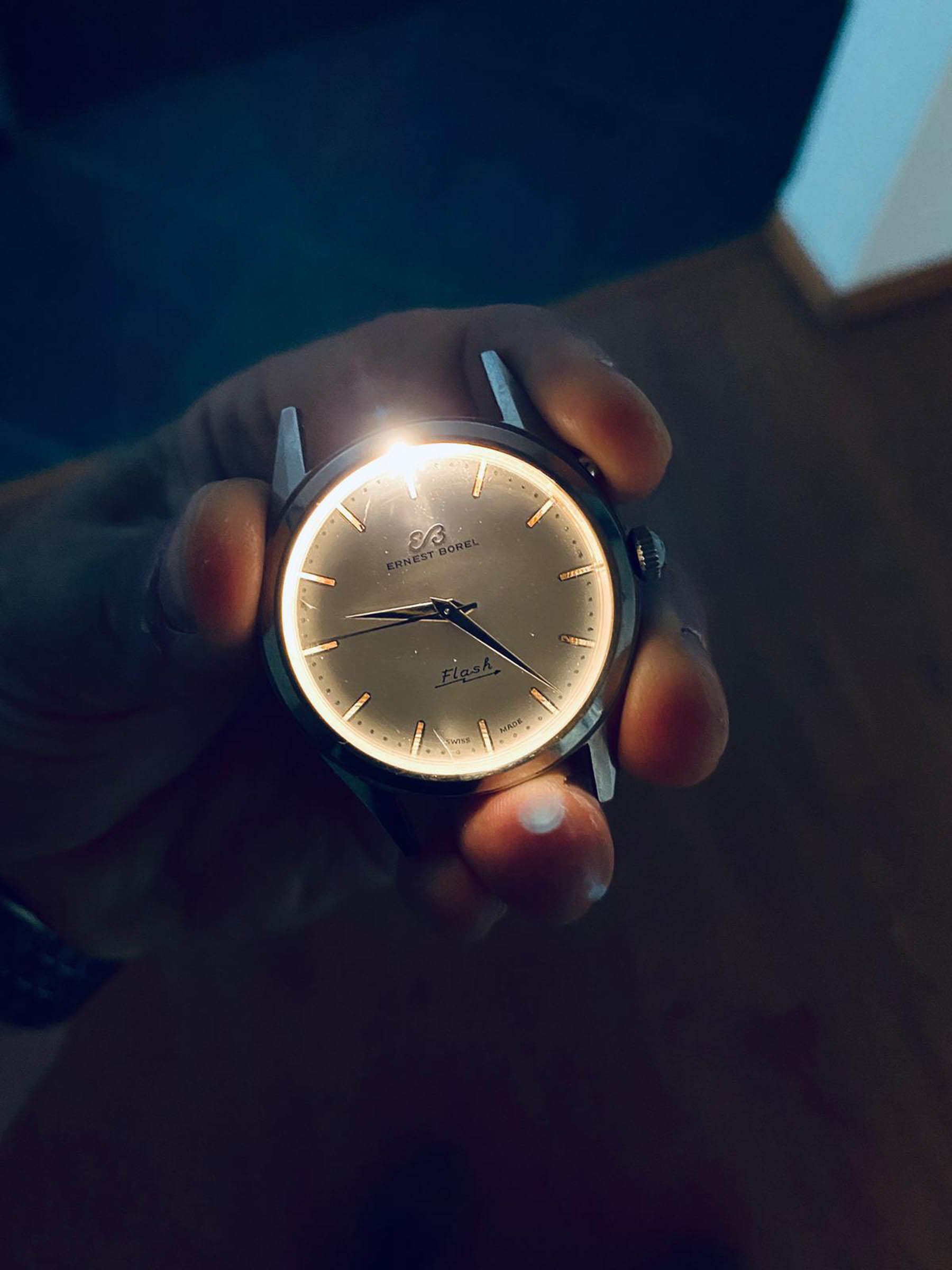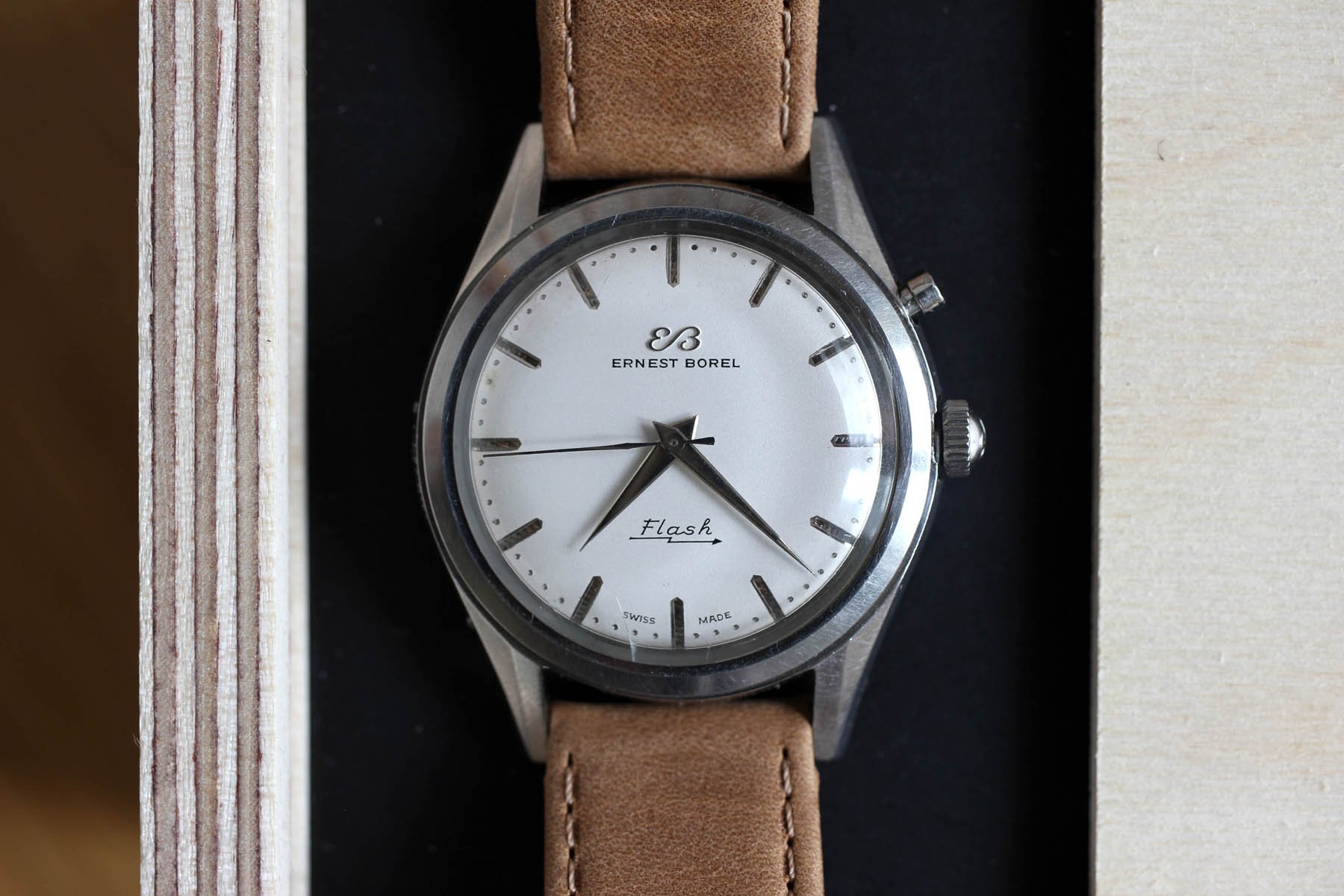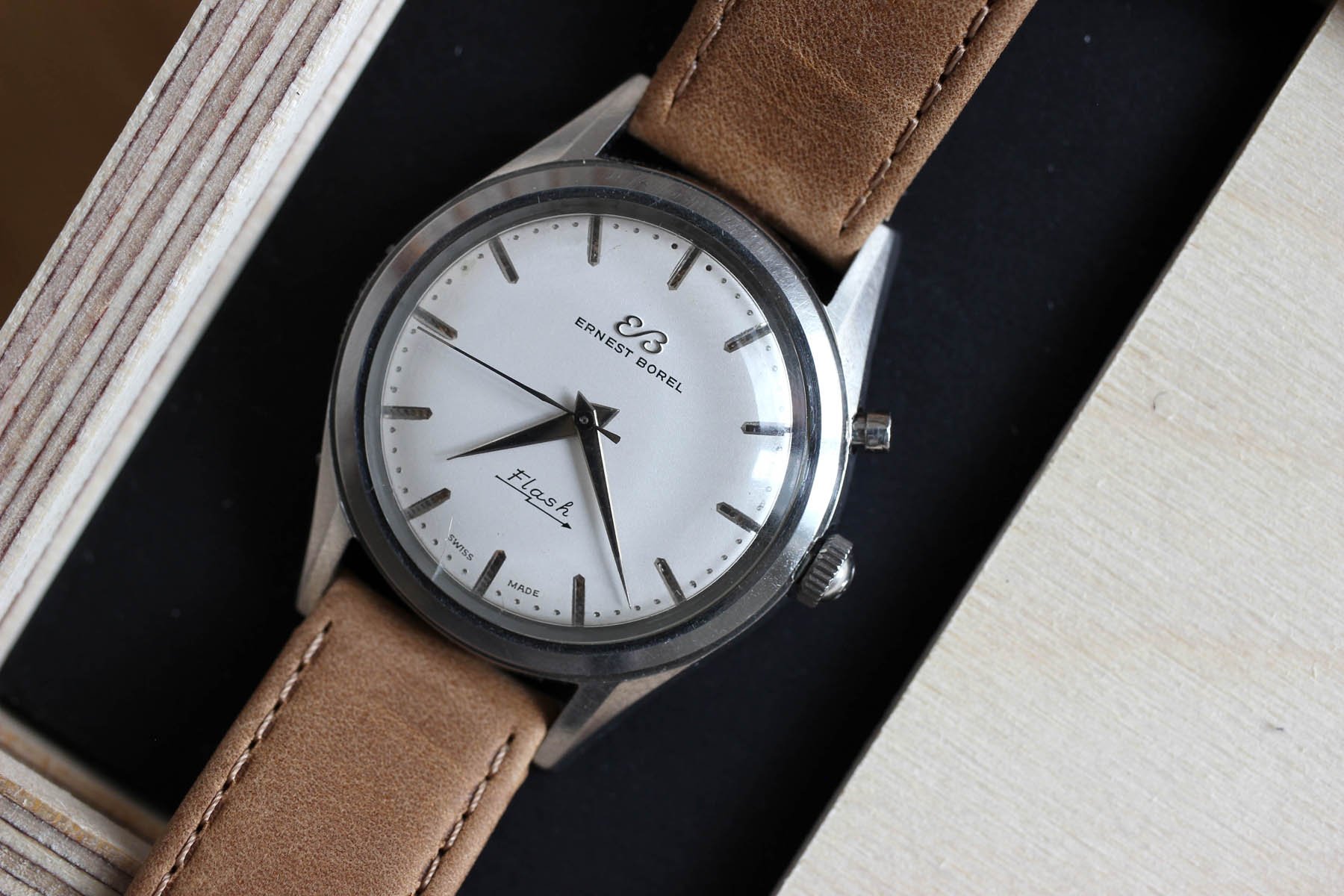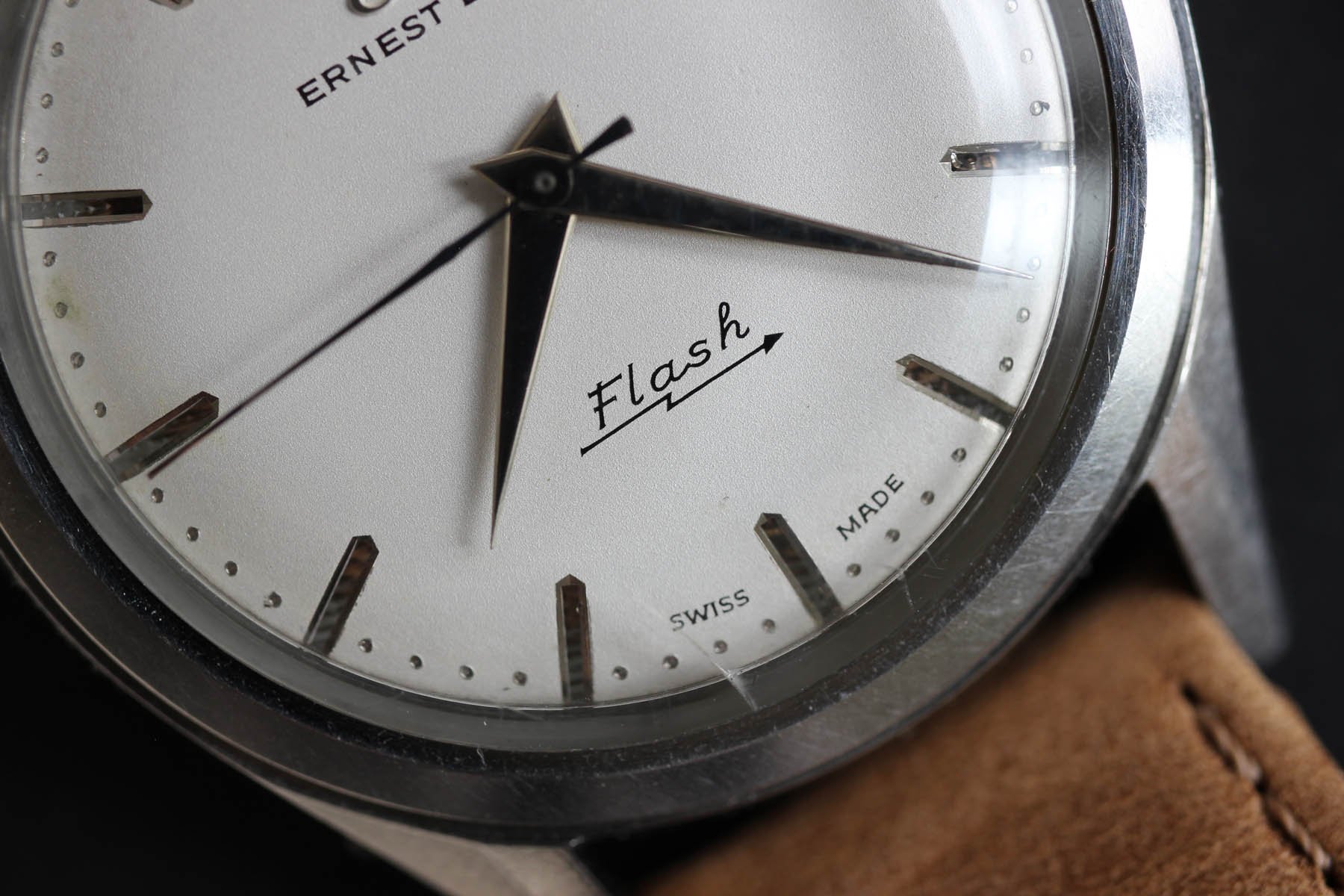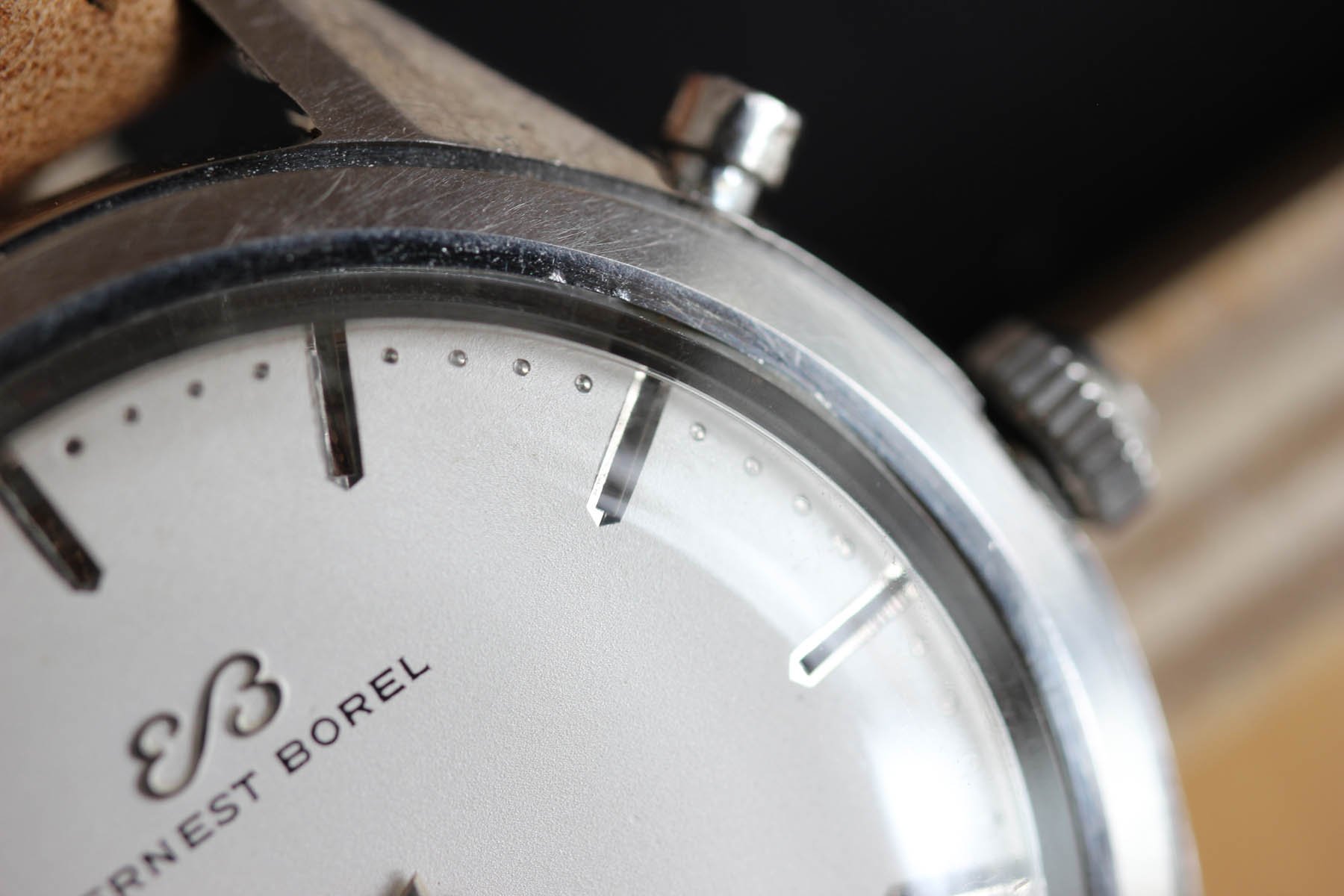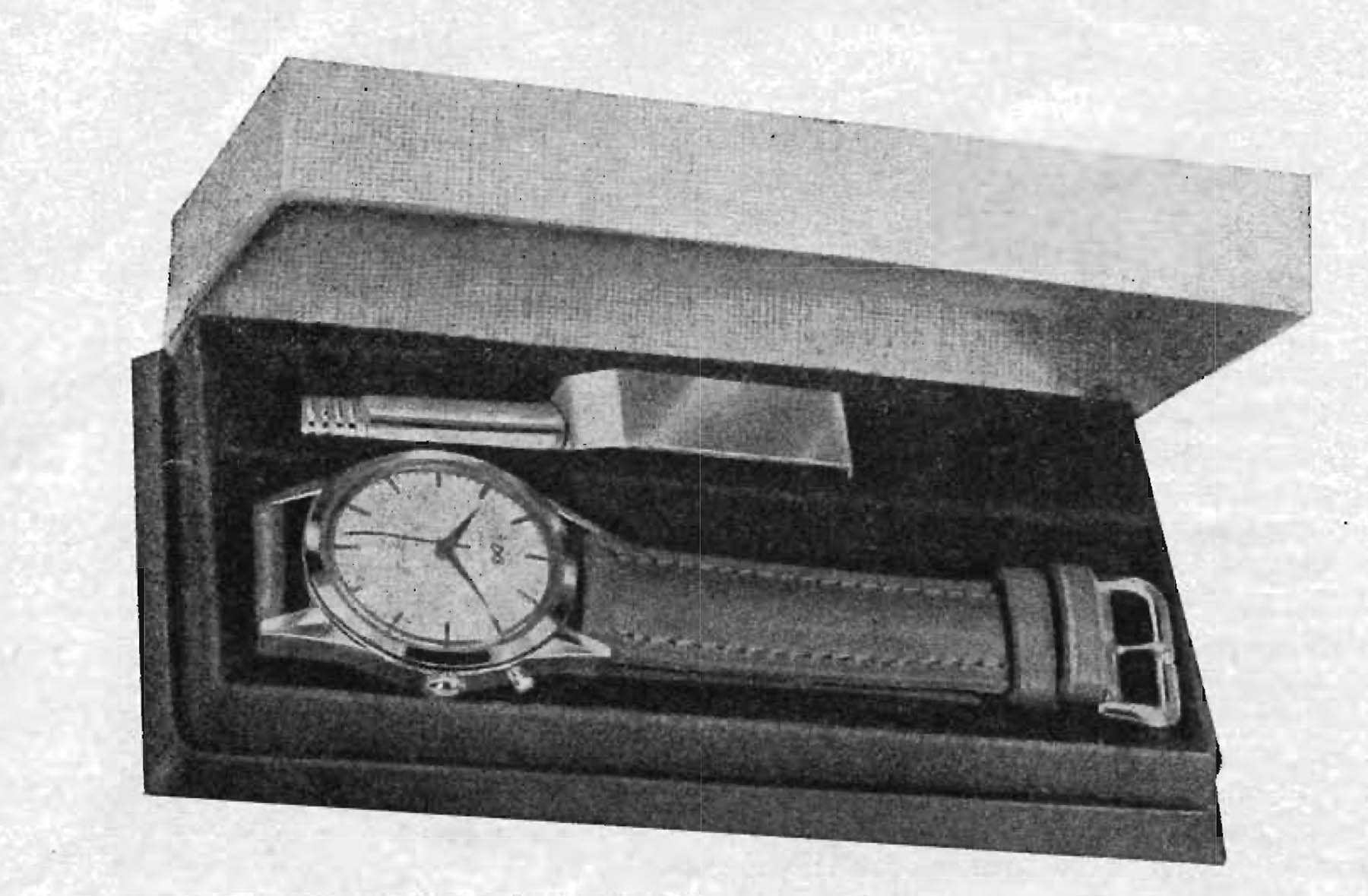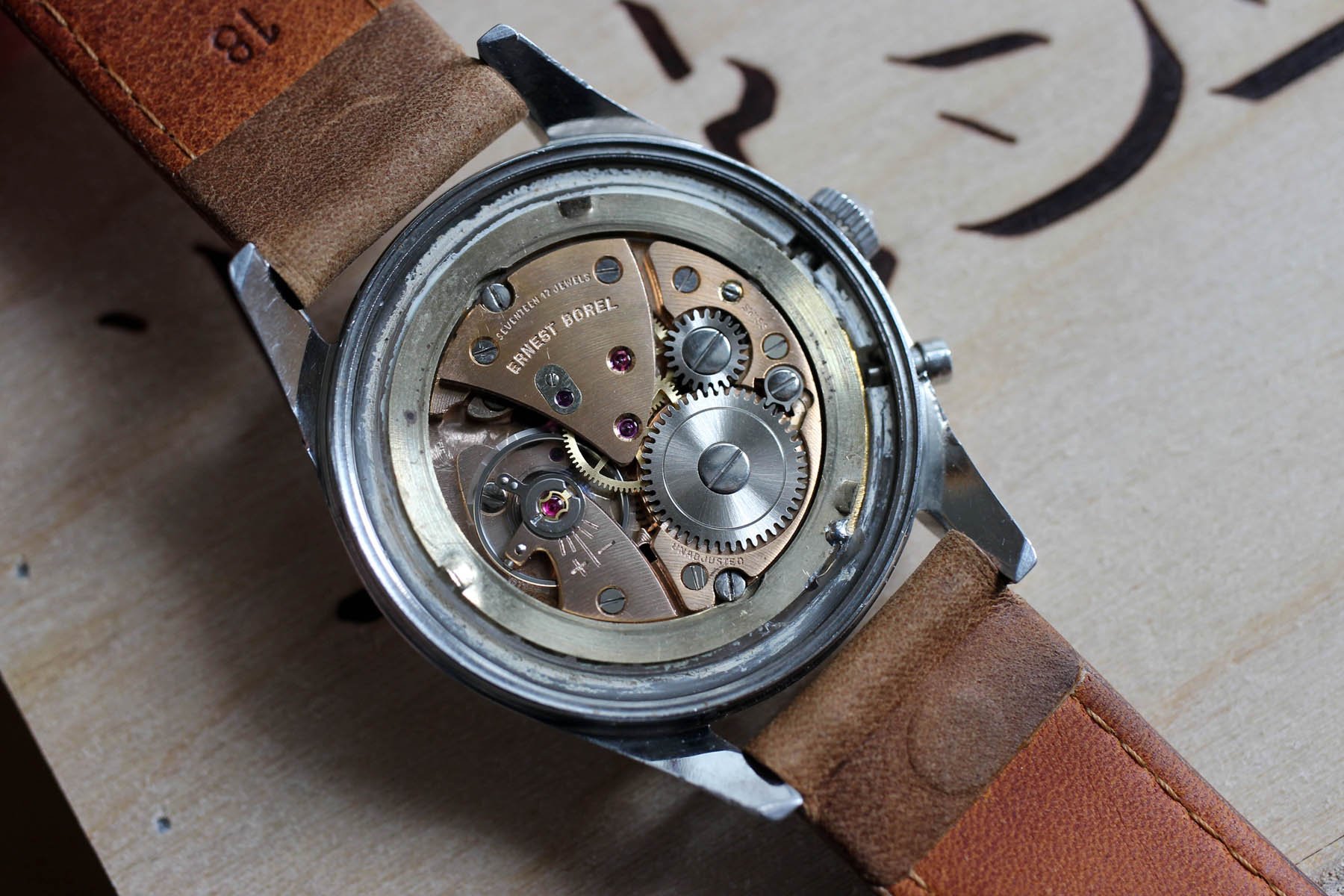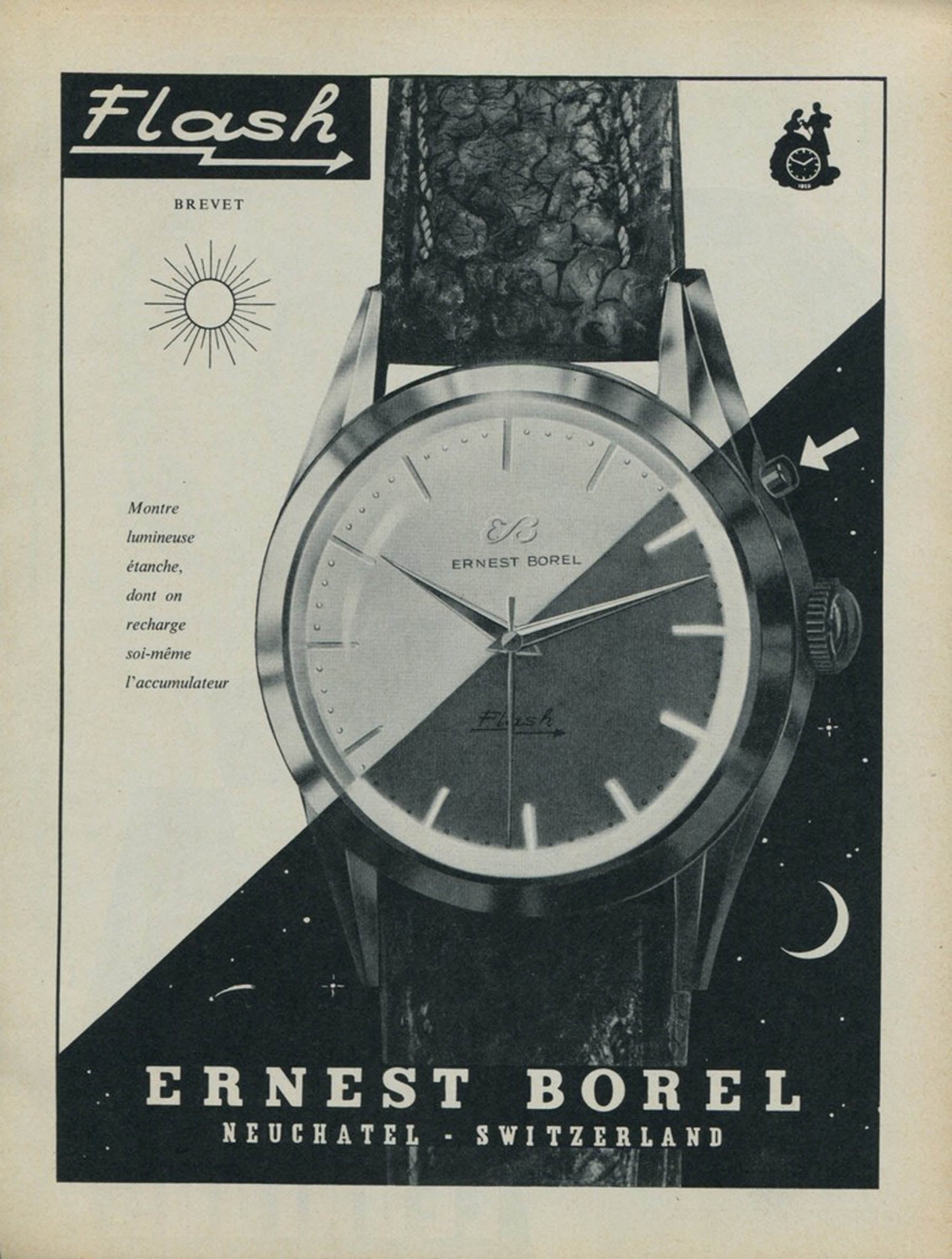#TBT The Hard-To-Find Ernest Borel Flash Watch
If you remember my saga last year about the Tourist Everlight, the world’s first electrically lit watch, you will also remember the Ernest Borel Flash. It took me a few years to hunt it down, but here it is in all its glory. My admiration for the Everlight is endless. But I have to admit that the Borel Flash amazes me even more.
Well, there is usually only one winner. To end up second, no matter the competition, and the number of contenders must truly hurt. The race to integrate electric lighting in watches started in 1956 with Ernest Borel and its patent that was filed on September 28th. I bet their smiles froze in Basel the following year when Ad. Allemann and his Tourist brand presented the Everlight watch to the world, establishing themselves as pioneers.
Ernest Borel Flash release
The guy who filed the patent first waited till Basel in 1958 to show his watch to the world. It was named the Ernest Borel Flash and had a dynamic thin symbol under the Flash name above 6 o’clock. The principle is almost identical to the Tourist Everlight. A built-in accumulator can be recharged by connecting a normal 1.5-volt flashlight battery. After long hours of online digging, I managed to find a Nordic watch magazine from June 1958 that shows the only official box I have ever seen for the Ernest Borel Flash.
It clearly shows a specially designed cradle for charging the battery that allows a connection between the positive terminal and the crown and the case with the negative terminal. The case shapes of the Flash and Everlight are very similar, but I would call the Ernest Borel more sporty. While we’re at the similarities, both watches have an almost identical hand size/shape, as well as a so-called “hat-styled“ crown and the pusher at 2 o’clock that activates the light. The major difference is that the Ernest Borel Flash has no bulb sticking out through the hole in the dial.
Flash wins in style
Now we get to the major difference. Looking at the Flash watch, you can’t see the bulb at all. The true magic reveals itself when you press the light-activation pusher. The light distribution is way ahead in comparison to the Everlight. It looks as if there are decades separating their production. I’m sorry to say it, but if I activate the light on the Everlight, it feels like turning on a dim light in an old, dark barn. The light effect on the Ernest Borel Flash is much more contemporary, strong, and equally distributed.
When you turn the light on, it’s clear that the bulb sits at 12 o’clock. But it is sunk so deep under a plastic ring that it casts light all over the edge of the dial. While the Tourist Everlight plays with light reflections, the Ernest Borel Flash actually distributes the light. The smartest part is the dial has literally no indexes! How come?
The dial of the year
Instead of indexes, they are just thin long cuts (or apertures if you prefer) in the shape and width of standard indexes. While the dial background is pearl white, there is a contrasting bare metal visible on the edge of each aperture, which visually forms a decent frame. During the day, you would not notice the holes instead of indexes and would just think it’s some polished metal. But you get the idea the moment it comes alive in the dark. The fact that you didn’t notice it before activating the light makes the design solution even more powerful. Two little holes drilled in place of the 59th and first minute are another thoughtful detail that confirms that the Borel designers went the extra mile to do one hell of a good job. If you realize how much precision was needed to achieve such detail, you have to admit that the dial is a stunner.
Three notable Flash details
I can’t help myself in comparing the Ernest Borel Flash and Everlight. The steel, chromed, and gold-plated versions of the Tourist Everlight have the logo “just” printed on the dial. The Flash comes with a beautifully applied EB logo in its typical butterfly shape. It’s the same symbol displayed on the crown. Well, I would not like to lead a quest to source another EB-signed crown, but in terms of style, it’s 2:0 in favor of the Flash. The third detail that puts the Flash ahead is what I call one of the most beautifully shaped central seconds hands in my entire watch collection. My knowledge is limited, and I don’t want to ruin it with some funky name, so just look at it and sink in.
Finding the Ernest Borel Flash
Some watches are hard to come by not because they’re not available but because they have too high of a price. Not the case this time. The Ernest Borel Flash resurfaces once every year or two. I don’t know the production volumes, but I estimate that there were many more Everlights. Just look at how many generic Everlight copies branded with names you’ve never heard of are out there. If you see the Flash, you should snap it up in a flash.
Revival
Beware that if you manage to grab one, unless it comes in NOS condition (very sci-fi), you will need to find a skilled watchmaker. I found my Flash in Finland, and I didn‘t bother investigating its condition. It was ridiculously cheap, but it came with its pusher recklessly tucked into its tunnel. Well, at least it was there, but my watchmaker Tomas had to flex his artistry to recreate the inner mechanism. I sourced a new miniature bulb in the US, the same with the new Plexi that’s already on the way.
Final thoughts
If I compare the Everlight to the Flash, the latter is the winner in all aspects. That’s not only from a visual standpoint but also in terms of production finishing. But still, both watches are genuine in their own ways, and both are dear to my heart. Nothing beats the simple charm of an honest three-hander from the late ’50s. And when it comes with such a quirky complication, amazing story, and limited offer, it’s immediately catapulted to the top ranks of my collection. Did I mention you can find one for under €200 if you are lucky? Well, happy hunting.

